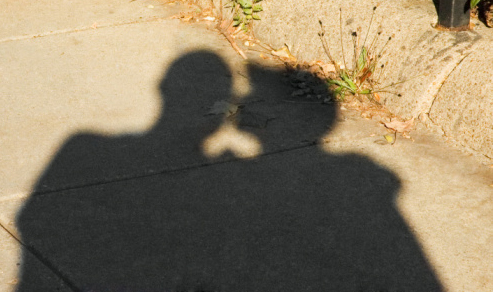As many of you will be aware, a large number of emails from the Climatic Research Unit (CRU) at the University of East Anglia webmail server were hacked recently (Despite some confusion generated by Anthony Watts, this has absolutely nothing to do with the Hadley Centre which is a completely separate institution). As people are also no doubt aware the breaking into of computers and releasing private information is illegal, and regardless of how they were obtained, posting private correspondence without permission is unethical. We therefore aren’t going to post any of the emails here. We were made aware of the existence of this archive last Tuesday morning when the hackers attempted to upload it to RealClimate, and we notified CRU of their possible security breach later that day.
Nonetheless, these emails (a presumably careful selection of (possibly edited?) correspondence dating back to 1996 and as recently as Nov 12) are being widely circulated, and therefore require some comment. Some of them involve people here (and the archive includes the first RealClimate email we ever sent out to colleagues) and include discussions we’ve had with the CRU folk on topics related to the surface temperature record and some paleo-related issues, mainly to ensure that posting were accurate.
Since emails are normally intended to be private, people writing them are, shall we say, somewhat freer in expressing themselves than they would in a public statement. For instance, we are sure it comes as no shock to know that many scientists do not hold Steve McIntyre in high regard. Nor that a large group of them thought that the Soon and Baliunas (2003), Douglass et al (2008) or McClean et al (2009) papers were not very good (to say the least) and should not have been published. These sentiments have been made abundantly clear in the literature (though possibly less bluntly).
More interesting is what is not contained in the emails. There is no evidence of any worldwide conspiracy, no mention of George Soros nefariously funding climate research, no grand plan to ‘get rid of the MWP’, no admission that global warming is a hoax, no evidence of the falsifying of data, and no ‘marching orders’ from our socialist/communist/vegetarian overlords. The truly paranoid will put this down to the hackers also being in on the plot though.
Instead, there is a peek into how scientists actually interact and the conflicts show that the community is a far cry from the monolith that is sometimes imagined. People working constructively to improve joint publications; scientists who are friendly and agree on many of the big picture issues, disagreeing at times about details and engaging in ‘robust’ discussions; Scientists expressing frustration at the misrepresentation of their work in politicized arenas and complaining when media reports get it wrong; Scientists resenting the time they have to take out of their research to deal with over-hyped nonsense. None of this should be shocking.
It’s obvious that the noise-generating components of the blogosphere will generate a lot of noise about this. but it’s important to remember that science doesn’t work because people are polite at all times. Gravity isn’t a useful theory because Newton was a nice person. QED isn’t powerful because Feynman was respectful of other people around him. Science works because different groups go about trying to find the best approximations of the truth, and are generally very competitive about that. That the same scientists can still all agree on the wording of an IPCC chapter for instance is thus even more remarkable.
No doubt, instances of cherry-picked and poorly-worded “gotcha” phrases will be pulled out of context. One example is worth mentioning quickly. Phil Jones in discussing the presentation of temperature reconstructions stated that “I’ve just completed Mike’s Nature trick of adding in the real temps to each series for the last 20 years (ie from 1981 onwards) and from 1961 for Keith’s to hide the decline.” The paper in question is the Mann, Bradley and Hughes (1998) Nature paper on the original multiproxy temperature reconstruction, and the ‘trick’ is just to plot the instrumental records along with reconstruction so that the context of the recent warming is clear. Scientists often use the term “trick” to refer to a “a good way to deal with a problem”, rather than something that is “secret”, and so there is nothing problematic in this at all. As for the ‘decline’, it is well known that Keith Briffa’s maximum latewood tree ring density proxy diverges from the temperature records after 1960 (this is more commonly known as the “divergence problem”–see e.g. the recent discussion in this paper) and has been discussed in the literature since Briffa et al in Nature in 1998 (Nature, 391, 678-682). Those authors have always recommend not using the post 1960 part of their reconstruction, and so while ‘hiding’ is probably a poor choice of words (since it is ‘hidden’ in plain sight), not using the data in the plot is completely appropriate, as is further research to understand why this happens.
The timing of this particular episode is probably not coincidental. But if cherry-picked out-of-context phrases from stolen personal emails is the only response to the weight of the scientific evidence for the human influence on climate change, then there probably isn’t much to it.
There are of course lessons to be learned. Clearly no-one would have gone to this trouble if the academic object of study was the mating habits of European butterflies. That community’s internal discussions are probably safe from the public eye. But it is important to remember that emails do seem to exist forever, and that there is always a chance that they will be inadvertently released. Most people do not act as if this is true, but they probably should.
It is tempting to point fingers and declare that people should not have been so open with their thoughts, but who amongst us would really be happy to have all of their email made public?
Let he who is without PIN cast the the first stone.
Update: The official UEA statement is as follows:
“We are aware that information from a server used for research information
in one area of the university has been made available on public websites,”
the spokesman stated.
“Because of the volume of this information we cannot currently confirm
that all of this material is genuine.”
“This information has been obtained and published without our permission
and we took immediate action to remove the server in question from
operation.”
“We are undertaking a thorough internal investigation and we have involved
the police in this enquiry.”




















